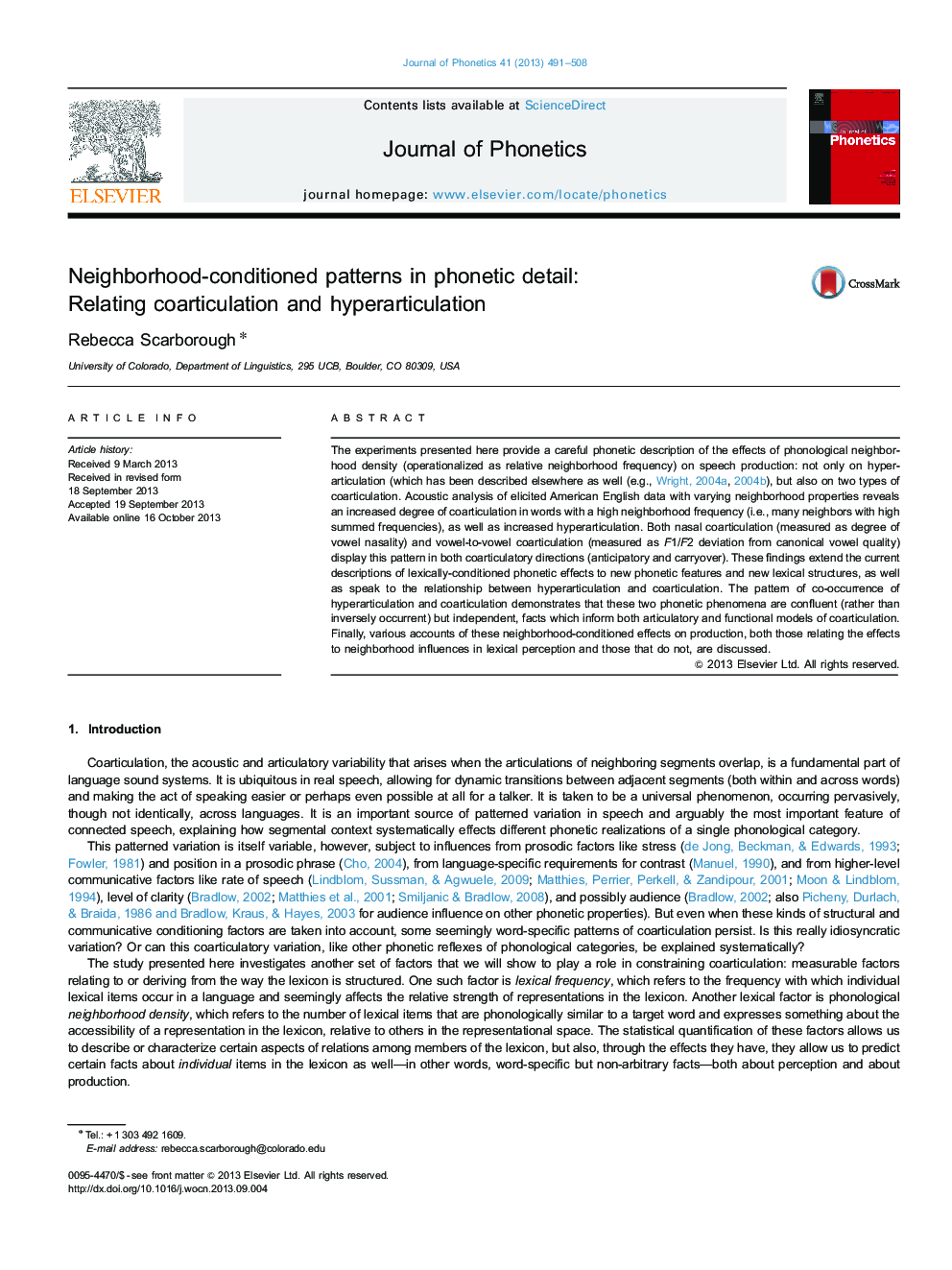| Article ID | Journal | Published Year | Pages | File Type |
|---|---|---|---|---|
| 1100740 | Journal of Phonetics | 2013 | 18 Pages |
•High phonological neighborhood density conditions increased nasal coarticulation.•High neighborhood density conditions increased vowel-to-vowel coarticulation.•High neighborhood density conditions increased vowel hyperarticulation.•Coarticulation and hyperarticulation effects are confluent, but independent.
The experiments presented here provide a careful phonetic description of the effects of phonological neighborhood density (operationalized as relative neighborhood frequency) on speech production: not only on hyperarticulation (which has been described elsewhere as well (e.g., Wright, 2004a and Wright, 2004b), but also on two types of coarticulation. Acoustic analysis of elicited American English data with varying neighborhood properties reveals an increased degree of coarticulation in words with a high neighborhood frequency (i.e., many neighbors with high summed frequencies), as well as increased hyperarticulation. Both nasal coarticulation (measured as degree of vowel nasality) and vowel-to-vowel coarticulation (measured as F1/F2 deviation from canonical vowel quality) display this pattern in both coarticulatory directions (anticipatory and carryover). These findings extend the current descriptions of lexically-conditioned phonetic effects to new phonetic features and new lexical structures, as well as speak to the relationship between hyperarticulation and coarticulation. The pattern of co-occurrence of hyperarticulation and coarticulation demonstrates that these two phonetic phenomena are confluent (rather than inversely occurrent) but independent, facts which inform both articulatory and functional models of coarticulation. Finally, various accounts of these neighborhood-conditioned effects on production, both those relating the effects to neighborhood influences in lexical perception and those that do not, are discussed.
